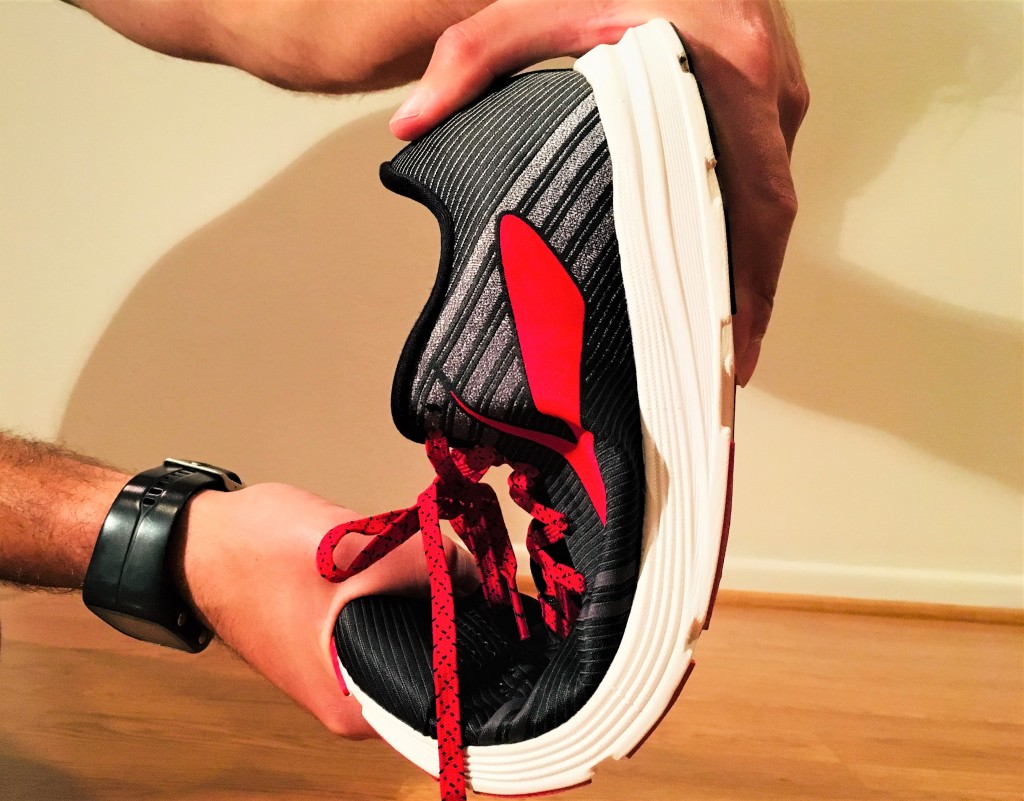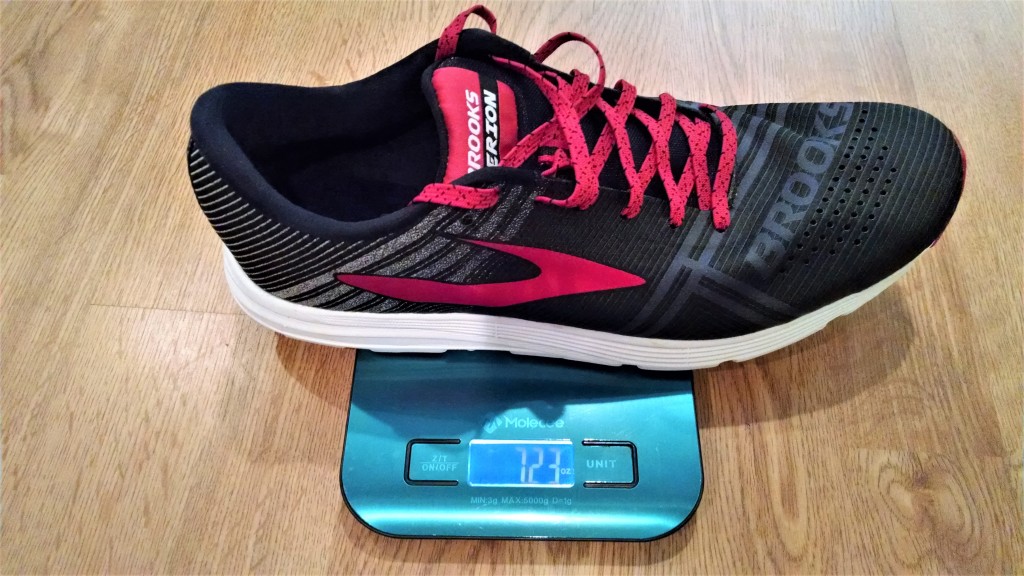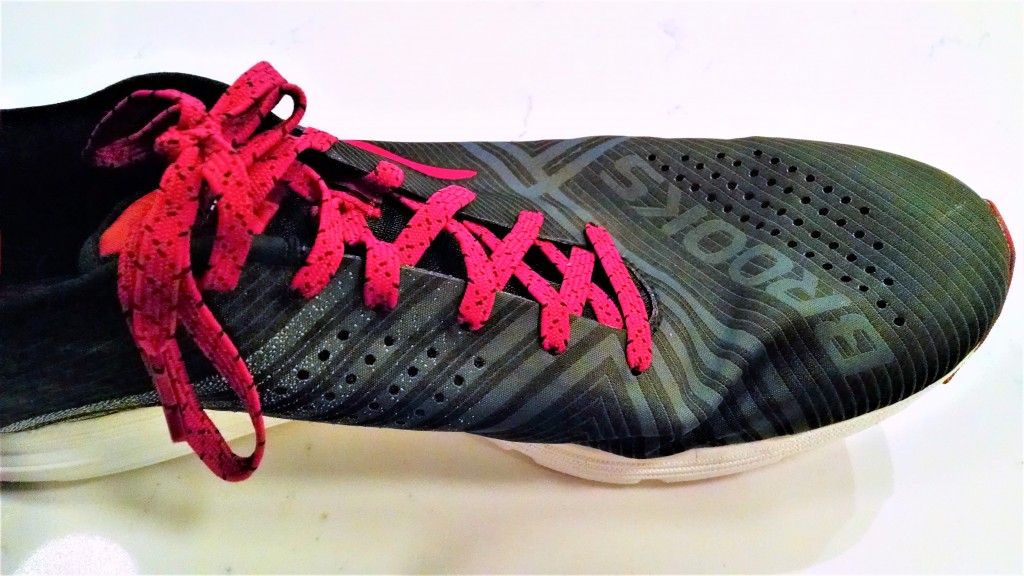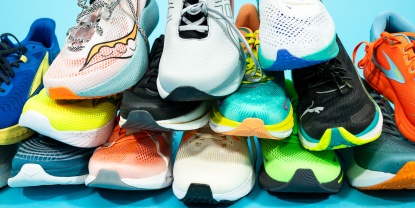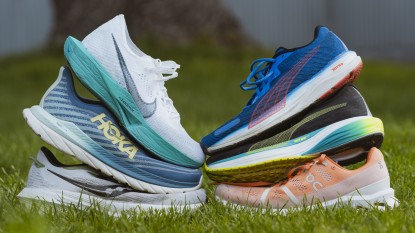Brooks Hyperion Review
Our Verdict
Our Analysis and Test Results
The Brooks Hyperion is loftily named after one of the twelve Titans, known for first coming to understand the cosmos and thereby siring Helios, the sun. Back on Earth (well, Gaia — Earth, is actually Hyperion's mother), it brings a new option for those looking for a speedy flat with a little extra form to it. We love the PureFlow line, but there's a lot of value to a slightly stiffer shoe that can kick back what you're putting down. That's where the Hyperion steps up. The heel is a bit higher than we'd prefer in a racing flat, but it tapers down gently enough that it doesn't interfere with the forefoot strikes while heel strikes are protected by the extra cushioning. We spent quite a while digging into the details of this unique kick and comparing these to other competitors, so read on to see if they're a good fit for you.
Performance Comparison
Responsiveness
When it comes to responsiveness, you don't get a ton of bounce or kickback from the BioMoGo DNA midsole, but there's a bit of pop. We maintain that the Hyperion is essentially a track shoe without spikes, and if you've ever run in spikes, you know that there's close to zero responsiveness — it's all in your feet and legs. These aren't quite that extreme. Plus, they have about 10mm of extra DNA at the heel, adding a bit more cushion and kickback for runners who land farther back on the foot.
The Hyperion has Propulsion Pods in the midsole to improve rebound, but it's not clear if that design makes a big difference in the energy return. Either way, the design performs quite well. Generally, to get more responsiveness, you'll find yourself in a more robust shoe with a thicker, less flexible sole. The rebound is also achieved by using a tough upper with minimal flex or give. We'll reiterate here that the Hyperion is best employed on short, fast runs, and its sole is firm, not plush, so middling responsiveness shouldn't be a detractor for most runners.
Landing Comfort
When it comes to lightweight racing flats, there's a line that has to be straddled between comfort and performance. The Hyperion leans a little closer to the performance side, especially for runners with wider feet. That's not a huge concern if you're focusing on 5Ks and shorter runs. The thin BioMoGo DNA midsole is just barely thick enough to protect the midfoot and forefoot from the road, but the extra 10mm of sole at the heel does a good job of protecting the heel.
It's also worth noting that because this model runs a bit narrow, it can alter how a runner lands and toes off since the foot isn't able to freely splay the way it can in other wider models. Even so, the Hyperion has a super lean, extra tight design that helps you keep the cadence high and the steps clean and snappy — you know, all the things you want in a racing flat.
Weight
The weight of the Hyperion is one of its craziest attributes, and it's the biggest reason it wins a Top Pick Award. It's just 14.5 ounces a pair for a men's 11, putting it firmly in the realm of track spikes.
If you're after extreme lightness, you're close to the pinnacle with these, so you'll need to start looking at other features, like responsiveness or comfort. There are other models in our review that strike a bit better balance of all attributes and are just a few ounces heavier.
Durability
Using a stripped-down design has a lot of important advantages. It's obviously easier to cut down weight, but it also reduces complexity and tends to reduce the chance for errors and other vulnerabilities. The single, seamless upper of the Hyperion benefits from that design strength. It also improves comfort by reducing the potential to chafe.
Generally, this shoe has good durability. The concern is that it leans a little too far to the stripped-down side and doesn't do enough to gird or buttress the ambitious design. There are good reinforcements around the eyelets, and rubber pads effectively protect high-wear zones on the outsole, but we noticed a good deal of other areas that could use a little more care.
For starters, an aglet was cracked and peeling apart when it arrived. That could just be a fluke, but it's not a great indication that the manufacturing process is kicking out indefatigable, world-class products. After a few weeks of training, some of the thin threading began to show signs of fraying, and the reflectors along the heel started falling off. In the grand scheme of things, these are not detrimental to the performance of the product, but they are annoying when you're paying for a premium running shoe. However, shoes that tend to do much better in durability also tend to be tank-like with fewer luxury or premium structures that can break down.
Upper Comfort
The Hyperion is generally pretty comfortable, but those with wider feet might find them a bit cramped. The good news is that they have a pretty short break-in period and they loosen up some after you put in a few miles with them. A shoe-horn might even be useful here.
Brooks always does a good job with its finer features, layering on the cushion and soft padding. These are a little different. The tongue is not quite as plush as the standard, max-comfort Brooks offering, but you're not likely to find many lightweight racing flats with this degree of cushion. It's also a relief that they chose to go with the rounded edges instead of the thin, chafing design we saw in other models.
It's a similar story for the collar padding. It's not the same volume of padding you'd get in their usual lineup, but it's the same luxurious design with a nice, silky cover. It still envelops the heel, ankle, and midfoot the way the more robust models do, but you don't feel like you're running in doughy pillows.
The super thin upper is made from a seamless, finely woven material, with laser-perforations for aeration. The fine weave essentially doubles as a sockliner, making the upper extremely silky and agreeable, despite its more spartan attributes.
These don't score higher because, as we mentioned, they are a bit tight for wider feet. About halfway through the transition from landing to toe-off, the foot compresses and spreads, squeezing the foot against the edges of the narrow toe box, making the shoe feel tight on each step and slightly altering the stride. Runners with narrow feet would likely assign a higher score here.
Breathability
The upper on the Hyperion is a finely woven material with lower permeability than most standard mesh uppers. Brooks overcomes that by not adding an additional layer in the form of a sockliner since the weave is comfortable enough to double as a sockliner. They also use laser perforations to create ventilation over the toes and inner midfoot, both regions being ideal zones for heat-exchange. Additionally, they have the advantage of not being as heavily padded as the comfort models, so there's less insulating material to hold or create heat and moisture.
As you move farther along the breathability scale, you start to drop other features, like upper padding and midsole cushion. If you want the ultimate in breathability, you'll find yourself in a super spartan shoe. The Hyperion has minimal upper padding, with only a perfunctory layer of material to insinuate a sockliner, so there's nothing to hang onto the heat or hold sweat. These are about the best you can find in breathability, but their level of support, comfort, and sole cushioning are…well…spartan.
Value
For such an excellent pace-setter, it comes with a fair asking price. You're unlikely to find many other worthwhile lightweight racing flats that aren't in the same price range.
Conclusion
The Hyperion took us back to our old track days in school. They feel a lot like spikes, but with considerably less grinding and lot more stability when you're standing. They just dare you to lay down the pace and leave your friends in the dust. They're among the lightest mainstream shoes on the market, but they still have enough cushion in the midsole and heel collar that you aren't left feeling like you're running on the road in your socks. Needless to say, we happily awarded these a Top Pick for Lightweight Racing Flat and track runners will understand why. It's true, they take a bit to break in, but once you've gotten in a few runs, you'll feel the speed and be ready to tear up the local 5K and shred last season's PRs.




